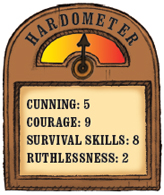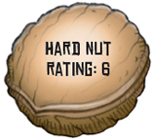

Instead of staying at home with her embroidery like most other Victorian ladies of leisure, Mary Kingsley travelled to uncharted territories in Africa and had adventures with hippos.
A QUIET LIFE
Mary Kingsley was born in London in 1862. Her father was a doctor who loved travelling – in fact he was seldom at home. He visited the South Seas, Africa and the United States, where he narrowly missed a trip with General Custer to the Battle of Little Big Horn (Custer and his men were all killed there). Mary heard the stories of his adventures but was never allowed to go with him. She stayed at home, looking after the house, her brother and her sick mother.
AFRICAN ADVENTURES
By the time Mary was 30 her parents were both dead. They’d left enough money to Mary and her brother so that they didn’t need to work. Very few Victorian ladies would have chosen to travel, especially not alone, but Mary decided to change her life completely. She travelled first to the Canary Islands and then to Sierra Leone and Angola in West Africa. On her next trip to West Africa she visited Gabon, where she collected specimens of fish, insects and plants for the British Museum in London. Mary travelled up the Ogooué River by canoe, through the country of the Fang people, who had a reputation for cannibalism, and became the first European woman to climb Mount Cameroon. She claimed she had scratched a hippo behind the ear with her umbrella, and come close to being devoured by a crocodile. When she returned to England she published a book, Travels in West Africa, gave lectures about her experiences and wandered the streets of Kensington with a monkey on her shoulder.

LAST JOURNEY
Mary Kingsley had fallen in love with Africa. She went back for the last time in 1899, this time as a nurse for prisoners of war in the Boer War. The following year she caught the disease typhoid and died. Determined to be different, even in death, she was granted her wish to be buried at sea.
